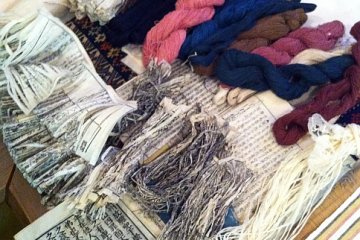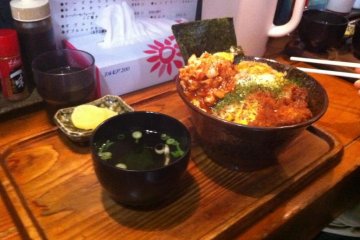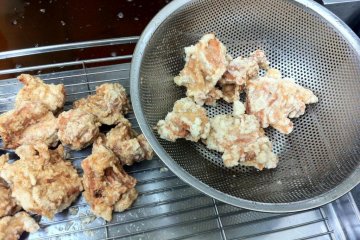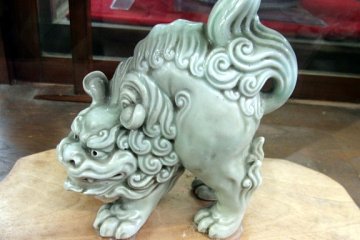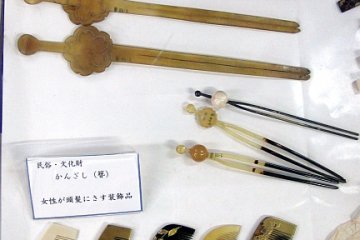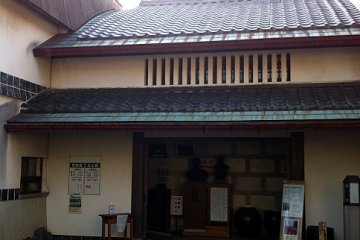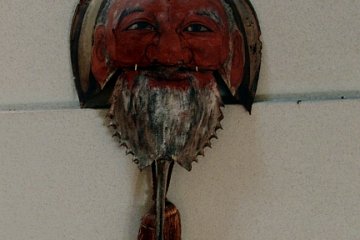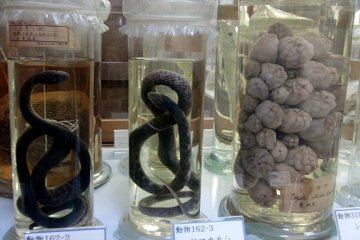The Saijo Folk Museum is located on the island formed by the moat of Saijo castle. The castle is long gone, replaced by a high school, and the Folk Museum is tucked into the southeast corner of the island. The museum is divided into two halves, a history museum on the left, and an arts and crafts museum on the right, the Ehime Mingeikan. Here, we’ll have a look at the history museum.
Entry to the museum is free, but you must take off your shoes and put on some nasty plastic slippers. This inconvenience aside, the museum is a wonderful place. It’s definitely a museum of the old-school variety – it has a bit of everything, and the style of display is nothing if not simple – a glass case and a piece of paper with a few words about the exhibit. But the exhibits are fascinating and beautiful, providing an intimate glimpse into the past. The first floor has examples of early Japanese photographs, ceramics, armor, minerals, and information about the local mining industry. Oh, and clocks.
A handwritten sign on the stairs says, “To the second floor. We have some unusual things”. They aren’t kidding. Even on the stairs there are some unusual things – for example, a couple of primitive kabuto-gani, horseshoe crabs, hang on the wall. But they were painted with whimsical bearded faces a long time ago. Not something you see every day. The unusual things on the second floor include a selection of flintlocks and rifles, a small cannon, lots of stuffed animals that have seen better days, and an extensive collection of creatures in jars of formaldehyde. These are both grotesque and evocative at the same time. There are also antique phones, fossils, and an extensive collection of seashells, large and small.
The explanations are all in Japanese, except for a bit about minerals and mining in English, but it doesn’t really matter. The exhibits are largely self-explanatory – they’re old, beautiful, and precious. And quite weird.
The building itself is also of interest. Architecturally, it’s art nouveau with a Japanese flavor. All of the edges are rounded off creating a very fluid, harmonious interior that perfectly matches the purpose of the building. With the craft museum in the other half the building, I spent a very enjoyable hour or so here, and would happily have spent longer if only time had permitted.



